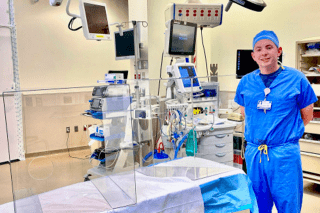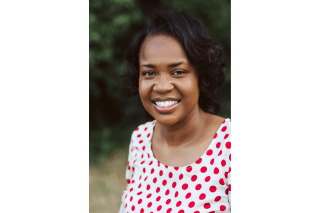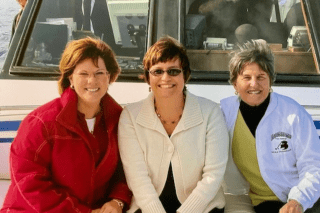Prepared to heal
Posted:

In early April, as COVID-19 cases began to spread across Pennsylvania, nurse anesthetist Christopher Heiss ’19M knew that there would soon be cases at Geisinger Medical Center in Danville.
Heiss, CRNA (certified registered nurse anesthetist), remembered seeing a picture on the internet of a box-shaped transparent barrier that would protect hospital personnel while treating patients infected with COVID-19.
“It was a plexiglass box with armholes. I brought the idea to Geisinger’s leadership, and they told me to move forward with it. The vice president of facilities (Al Neuner) at Geisinger told me we could make these in-house, so we started working in the carpentry shop together. And I had permission from the anesthesia department to put these into practice.”
After the hospital’s internal physical plant staff created prototypes, a manufacturer was enlisted to build dozens of polycarbonate versions in sizes to fit anyone from a child to the largest adult, according to Heiss. One week later, multiple versions of the barriers were available throughout the Geisinger Health System.
One of the tasks that nurse anesthetists undertake is placing and removing endotracheal tubes (or breathing tube) in patients — and it’s one of the procedures that carry the most significant risk for health care providers. “During that process, patients can cough and spread germs,” says Heiss. “The aerosolization barrier helps protect us during those events. If the patient can’t breathe, we can support them with an endotracheal tube and still protect ourselves.”
The Barrier for Respiratory Aerosolization (BRA), as Heiss calls it, is also useful for patients who require a nebulizer — a device that works like a continuous inhaler to deliver medicine to open small airways in the lungs.
“From idea for the barrier to the point where every hospital had them was seven days,” says Heiss. “Two days after that there was a second version and in the days that followed a portable PVC version with clear plastic sheeting was ready for EMS programs and Life Flight.”
During the rapid development process — with leadership support from Dr. Douglas Kupas, emergency medicine, EMS physician, and statewide EMS director; and Dr. Scott Vaughan, anesthesiologist — Geisinger staff shared input in an email chain that grew to more than 50 people.
The diversity of Heiss’ background made him an ideal fit to spearhead the effort. His medical career began as an EMT as a teenager, followed by functioning as a paramedic in rural communities, and eventually serving as a flight nurse on a medical helicopter. Within the hospital, he’s worked in the operating room, emergency room, and intensive care units. “Wherever critical patients are found,” says Heiss. “I’ve been there.”
“I’ve managed both suspected and COVID-19 positive patients. I’m more worried about asymptomatic people,” says Heiss. “I feel more comfortable around suspected or positive patients because we’re all taking precautions. I know I’m going to be protected.”
“One of the most valuable things we had in all this was time — that time has been valuable. Not everybody had that time,” says Heiss. “It took less than a week to implement the barriers throughout an entire health system. I’ve never seen something unfold that quickly.”



